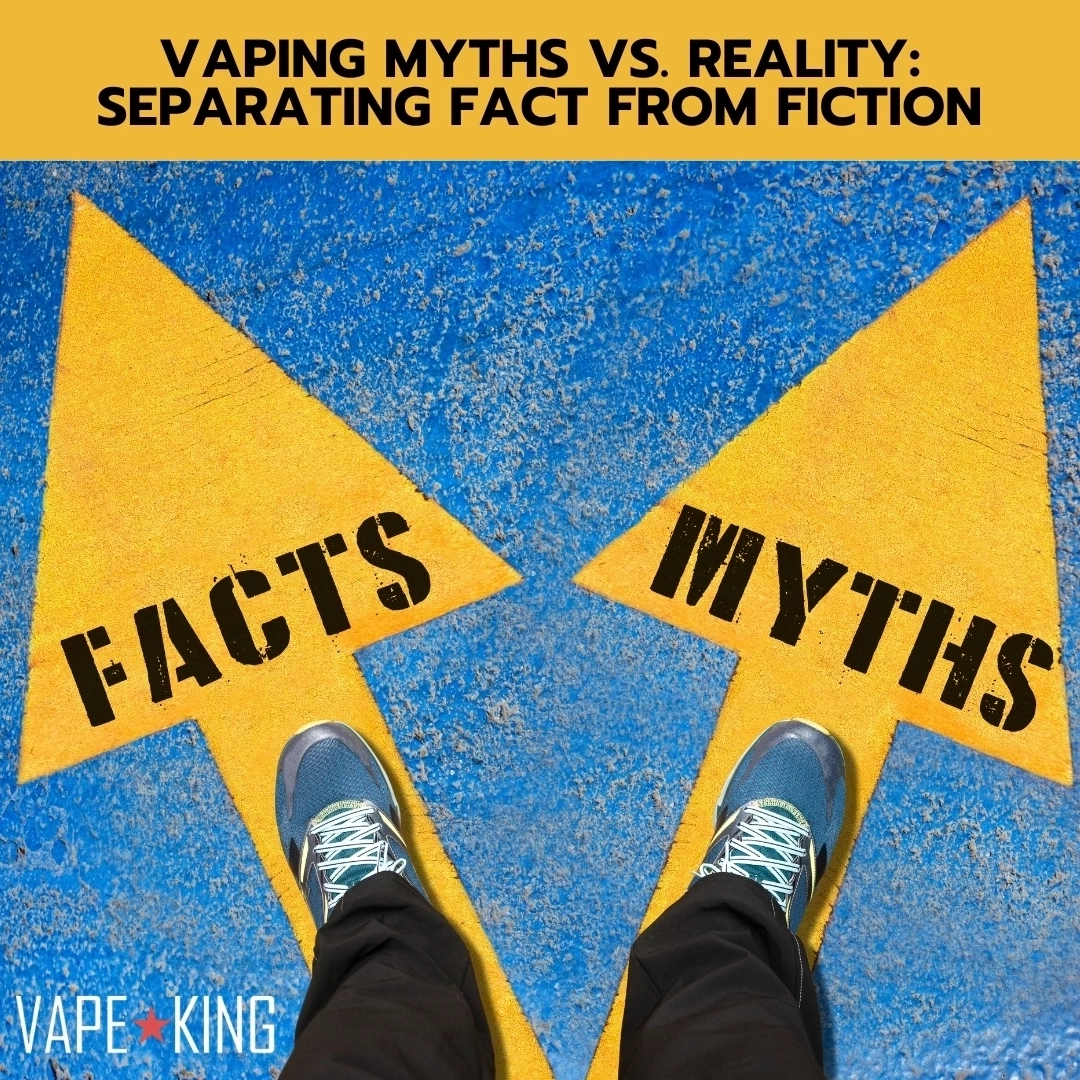Vaping Myths vs. Reality: Separating Fact from Fiction

Vaping has become a cultural phenomenon over the past decade, with millions of people around the world turning to e-cigarettes as a less harmful alternative to traditional smoking. However, with its rapid rise in popularity, vaping has also attracted its fair share of myths and misconceptions. In this blog post, we'll explore some of the most common vaping myths and debunk them with scientific facts.
Myth 1: Vaping Is Just as Harmful as Smoking
Reality: It's essential to distinguish between smoking and vaping. Traditional cigarettes contain thousands of harmful chemicals, many of which are carcinogenic. In contrast, e-cigarettes vaporize a liquid that typically consists of nicotine, flavorings, and a base liquid like propylene glycol or vegetable glycerin. While vaping is not entirely risk-free, it is widely considered to be significantly less harmful than smoking by health experts.
Myth 2: E-Cigarettes Are Targeted at Kids
Reality: Many opponents of vaping argue that e-cigarette companies intentionally target children with colorful packaging and sweet flavors. In reality, these flavors appeal to a broad audience of adults who are looking to quit smoking or enjoy a less harmful alternative. Responsible vaping companies adhere to strict age verification processes to prevent underage sales.
Myth 3: E-Cigarettes Explode Regularly
Reality: Cases of e-cigarettes exploding are exceedingly rare and often attributed to improper use, low-quality devices, or damaged batteries. When used correctly and purchased from reputable sources, the risk of an e-cigarette exploding is minimal.
Myth 4: Vaping Doesn't Help You Quit Smoking
Reality: Numerous studies have shown that vaping can be an effective smoking cessation tool. While quitting smoking is challenging, many former smokers credit e-cigarettes with helping them quit or significantly reduce their tobacco consumption. The key to success often lies in finding the right vaping setup and e-liquid that matches your preferences.
Myth 5: Vaping Produces Harmful "Secondhand Vapor"
Reality: Secondhand vapor from e-cigarettes is not the same as secondhand smoke from traditional cigarettes. Studies have found that the exposure to harmful substances in e-cigarette vapor is significantly lower compared to the toxins found in tobacco smoke. While it's considerate to be mindful of others and not blow vapor directly into their faces, vaping in most public places is not associated with the same health risks as smoking.
Myth 6: Vaping Causes "Popcorn Lung"
Reality: The myth of "popcorn lung" stems from a chemical called diacetyl, which was once used in some e-liquid flavorings. However, responsible manufacturers have removed diacetyl from their products. The levels of diacetyl found in e-liquids were also much lower than those in the factory workers who developed popcorn lung from inhaling large amounts of the chemical. There is no evidence to suggest that vaping causes this condition.
Conclusion
As vaping continues to grow in popularity and acceptance, it's crucial to be well-informed about the practice. Myths and misconceptions can cloud the perception of vaping, but separating fact from fiction is essential for making educated decisions about your health and well-being. If you're a smoker looking to quit or an adult interested in vaping, it's important to consult with reputable sources and stay up to date with the latest research in the field. Vaping, when used responsibly, can offer a less harmful alternative to smoking and potentially improve the lives of those looking to quit traditional tobacco products.
No posts found
Write a review


